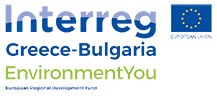Investment projects appraisal
|
Course title: |
Investment projects appraisal |
|
|
Course code: |
IFIPA |
|
|
ECTS: |
3 |
|
|
In-class hours |
Lectures: |
15 |
|
Laboratory work/Tutorials: |
15 |
|
|
Self-preparation hours |
Practical training: |
- |
|
Other: |
120 |
|
|
Total hours: |
150 |
|
|
Language: |
English |
|
|
Study cycle: |
BSc |
|
|
Semester: |
Winter, summer |
|
|
Faculty: |
Faculty of Economics |
|
|
Name of the lecturer(s): |
Prof. Ivan Penov, PhD |
|
|
Mode of delivery: |
Face-to-face, distance learning |
|
|
Prerequisites: |
No prerequisites |
|
|
Learning outcomes of the course unit: |
The course examines the steps in the development and evaluation of investment projects. The main objective of this course is to develop basic practical skills for the development and evaluation of investment projects. The students are expected to select and develop own project. |
|
|
Course contents: |
LECTURES 1. Introduction Aspects of projects. Feasibility Study. Project 2. Basic concepts in the projects appraisal. Revenues, investments, cost, and flows. Present and future value of money. Net present value 3. Analysis of the markets. Supply and demand. Prices and types of competition. Product supply – Competitors. Product demand – Customers. 4. Preparation of information. Project Goals. Technical design and size of investment needed. Production capacity, production technology and production costs. 5. Financing the project. Programs for supporting investment. Bank loans. Leases. Interest. Repayment plan 6. Evaluation of investment projects. Measurable and immeasurable benefits from the project. Shadow prices. Economic and financial analysis. Construction of the revenue flows. Construction of expenditure flows. Calculation of indicators: net present value, internal rate of return, payback period. Development of scenarios. 7. Choice of investment projects. Net Present Value. Internal Rate of Return.Playback period. Ranking of projects. Selection of projects by banks and investment institutions. Selection of projects for funding from the European and national programs.
TUTORIALS 1. Basic concepts in the projects appraisal. Revenues, investments, cost, and flows. Present and future value of money. Net present value 2. Preparation of information. Project Goals. Technical design and size of investment needed. Production capacity, production technology and production costs. 3. Construction of the revenue flows. Construction of expenditure flows. 4. Calculation of indicators: net present value, internal rate of return, payback period. Development of scenarios 5. Choice of investment projects. Ranking of projects. Selection of projects by banks and investment institutions. Selection of projects for funding from the European and national programs. |
|
|
Recommended or required reading: |
European Commission. (2008). Guide to Cost-Benefit Analysis of investment projects. Structural Funds, Cohesion Fund and Instrument for Pre-Accession http://ec.europa.eu/regional_policy/sources/docgener/guides/cost/guide2008_en.pdf |
|
|
Planned learning activities and teaching methods: |
At the lectures, the main concepts and problems are presented and discussed. At the tutorials, the students develop their own project and model on EXCEL. Using the model the students are supposed to develop at least three scenarios: pessimistic, realistic, and optimistic. At the final exam, the students present their projects and additional questions are asked related to the training material. |
|
|
Assessment methods and criteria: |
Participation in class discussions-10% Projects- 60% Final exam and project presentation- 30% |
|
 - Събития по случай 80-я юбилей на АУ
- Събития по случай 80-я юбилей на АУ











